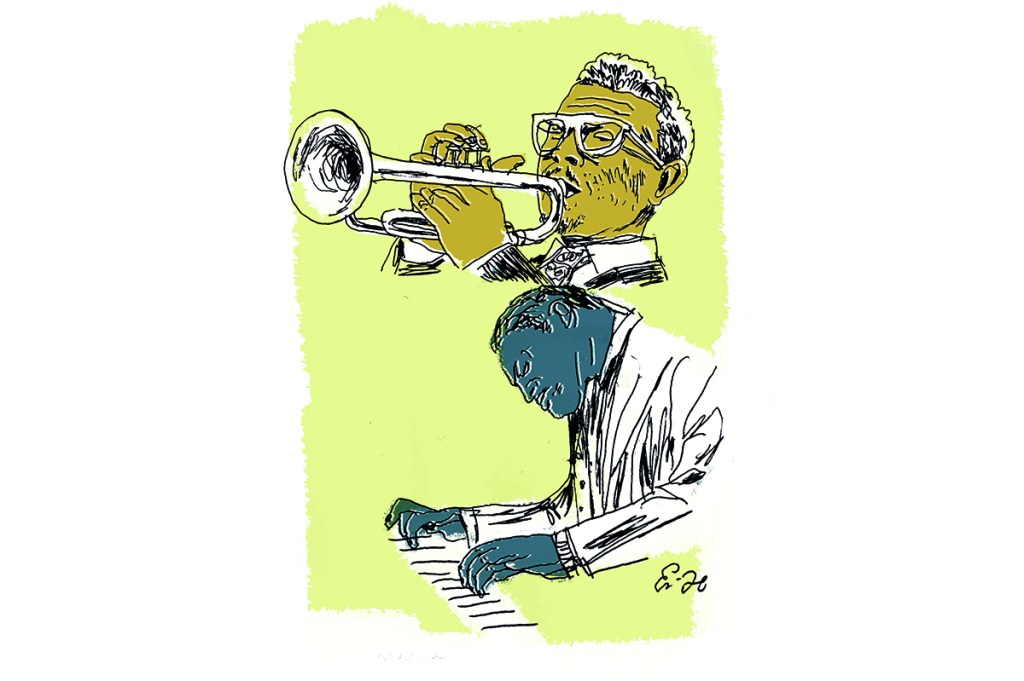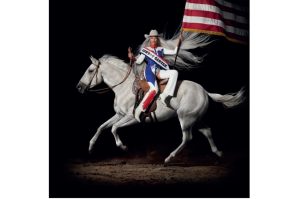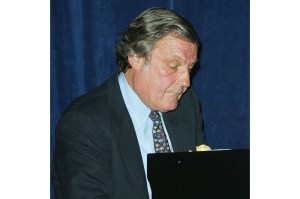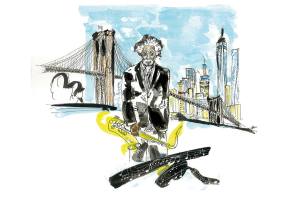There is a long tradition in jazz of duets between trumpeters and pianists. It’s a mercilessly revealing format, one that allows for no hiding on the part of either performer. But the payoff can be big. Consider the recording of the song “Weather Bird” by Louis Armstrong and Earl Hines in December 1928. Part of the epochal Hot Five and Hot Seven sessions that announced a new era in jazz, it featured Armstrong ripping up the old New Orleans playbook. Armstrong’s remarkable rhythmic innovations sometimes seem like the musical equivalent of a running back stutter-stepping to fake out his opponent before exploding downfield. He helped ensure that the Roaring Twenties really roared. Since then, a variety of impressive trumpet and piano duets have followed: Ruby Braff and Ellis Larkins; Jon Faddis and Oscar Peterson; Doc Cheatham and Sammy Price; Wynton and Ellis Marsalis.
Into this crowded field saunters the newly released album In Harmony, featuring Roy Hargrove and Mulgrew Miller (Resonance Records). How does it fare? Very well indeed. For anyone looking for a stocking stuffer for the aficionado — or merely the lover — of good music, here it is. This posthumously issued two-LP set was originally recorded during two live concerts — the first in January 2006 at Manhattan’s Merkin Hall, the second in November 2007 at Lafayette College in Easton, Pennsylvania. It has been done up proud by Resonance, complete with a lavishly illustrated booklet that features extensive comments from jazz luminaries such as Sonny Rollins, Ron Carter and Christian McBride. None of it is an exercise in nostalgia — Miller died at fifty-seven in 2013 and Hargrove at forty-nine in 2018. Rather, it’s a riveting display of two superb artists cruising along at an altitude of 40,000 feet, and manifestly enjoying themselves throughout the musical proceedings.
Of the two, Hargrove enjoys greater fame. Miller, whose career began in the late 1970s, served as what was known as a first-called sideman for the likes of Johnny Griffin and Art Blakey before launching his own series of recordings. Hargrove was a shooting star; he first picked up a cornet at nine years old. At the Booker T. Washington high school in Dallas, he wowed not only his peers with his prowess, but also a visiting Wynton Marsalis, who pushed him to keep pursuing his musical studies. Growing up in the Lone Star State meant that he was immersed in the blues; as Hargrove put it, “Texas is the Bible Belt. People know what that is when you go to church and somebody sings a solo. That becomes a part of you.”
In the hothouse atmosphere of the late 1980s, Hargrove began recording. His debut CD was called Diamond in the Rough, which featured Thelonious Monk’s “Ruby My Dear” and Benny Golson’s “Whisper Not.” Hargrove’s early interest in jazz standards showed that he was a young lion who embraced rather than rejected the past. There is an unmistakably joyous and jaunty quality to Hargrove’s playing on this first album — perhaps not yet masterful, but clearly on its way. After Jimmy Heath first heard Hargrove, the veteran jazz saxophonist nicknamed him “Hardgroove” because of his sheer power.
But Hargrove never got stuck in a rut. For all his hard bop accomplishment, he branched out during the 1990s, traveling to Havana to widen his musical argot. And so he did. His ten-piece band, Crisol, dives headfirst into Afro-Cuban music on the 1997 album Habana, drawing on the work of the great and underappreciated jazz trumpeter Kenny Dorham. Hargrove offers a snazzy, updated take on Dorham’s song “Una Mas,” endowing it with an effervescent and fetching quality, though Russell Malone steals the show with a propulsive electric guitar solo. In 2009, Hargrove reunited with Malone for a set of ballads on the Chesky Records label that displays his flugelhorn work to stunning effect, both in its beauty of tone and its immaculate intonation.
Those qualities are abundantly in evidence on the unrehearsed, spontaneous collaboration between Hargrove and Miller. It marks a return to the core of the tradition for the former. The songs on this album range from “What Is This Thing Called Love?” to “I Remember Clifford,” from “Con Alma” to “Fungii Mama.” On this last song, which was composed with a West Indian beat by the trumpeter Blue Mitchell, Hargrove absolutely lets it rip, tossing off one searing riff after another, often rooted in cascading triplets and dotted eighth notes, and, if I hear right, even a bit of double-tonguing to speed things up at one point. I feel immensely fortunate to have had the chance to hear Hargrove and his band live a few years after this recording was made. The setting was Blues Alley in Washington, DC, and the force of Hargrove’s presence and his chops alike were unmistakable. In harmony? Pshaw. He was a lot more than that.
This article was originally published in The Spectator’s December 2021 World edition.


















